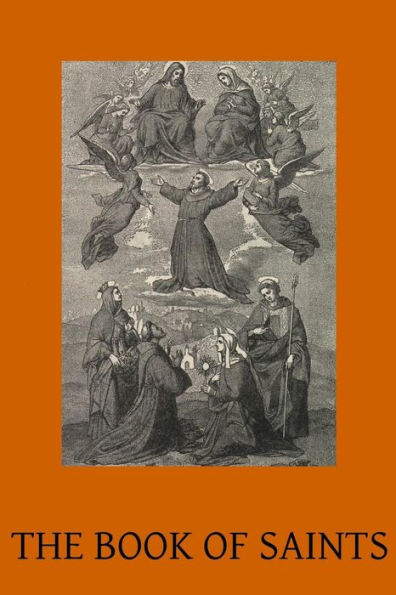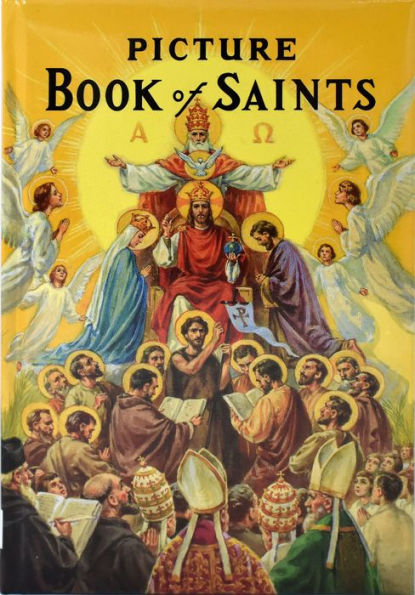Home
The Book of Saints: A Dictionary of Servants of God Canonised by the Catholic Church Extracted from the Roman & Other Martyrologies
Loading Inventory...
Barnes and Noble
The Book of Saints: A Dictionary of Servants of God Canonised by the Catholic Church Extracted from the Roman & Other Martyrologies
Current price: $15.95


Barnes and Noble
The Book of Saints: A Dictionary of Servants of God Canonised by the Catholic Church Extracted from the Roman & Other Martyrologies
Current price: $15.95
Loading Inventory...
Size: OS
*Product Information may vary - to confirm product availability, pricing, and additional information please contact Barnes and Noble
MENTION of the Saints of the Catholic Church very frequently occurs both in general reading and as having given their names to churches, towns, villages and topographical features. The object of this compilation is to enable the personage referred to readily to be identified. Nothing more is attempted in this volume. Of a certain number of the Saints detailed Lives have been published in English. Of many more full accounts in other languages, particularly in French and Italian, are easily accessible. Again, there are several good and reliable Series of Lives of the more prominent Saints. The best known of these to Englishspeaking people is Alban Butler's Lives of the Saints, an eighteenth century work which has been many times reprinted. In no language, however, does there exist any exhaustive work of the kind; nor in the nature of things can there be. The nearest approach thereto we have is the Latin " Acta Sanctorum " of the Bollandists, a body of Jesuit Fathers gathered together in Belgium for the special purpose of carefully sifting and reproducing all documents bearing historically on the life and cultus after death of each individual Saint. Of their work, begun in the seventeenth century by a certain Father Bolland, nearly seventy huge folio volumes have appeared. It is still far from complete, and on account of the results of modern historical research in many places needs development and extensive revision. Moreover, of no small number of canonised Saints no record at all now remains. We have to be content with proof that in bygone times they were popularly honoured as Saints, and by the Church formally recognised as such. Nor is it even possible to estimate the number of God's servants whom the Church has at one place or another venerated as Saints. In the first Ages of Christianity canonisation was effected in each country by the joint act of one or more Bishops and their people. Of this act they left as a rule sufficient testimony by dedicating a church in honour of the new Saint, whose name it thenceforth bore, and by instituting an annual festival in his honour. From about the eleventh century the procedure began to be systemised and centralised, with the result that canonising is now reserved exclusively to the Holy See. The legislation of Pope Alexander III in the twelfth century and of Urban VIII in the seventeenth has firmly established this principle. The present process of Canonisation is exceedingly complex. It consists in the first place of a thorough investigation into all the particulars that can be ascertained of the life and death of the alleged Saint, all facts connected with whose career, both public and private, together with all his utterances and writings, are tested in every way. He must be shown to have been God-fearing, pious, just in his dealings, patient, self-denying, charitable, and so on, far above the average of ordinary good men. In this, as in all subsequent stages of the procedure, every witness is examined under oath and in the presence of a trained Church lawyer, who is obliged to urge all the objections he can think of, and who is at liberty not only to cross-examine the witnesses put forward but to call any number of others he pleases in order to rebut their testimony. Supposing the judgment of the Court of First Instance to be favourable, the case goes for retrial to a higher tribunal. In these proceedings not only are witnesses called to testify to individual facts, but particular stress is put upon the popular verdict concerning the alleged Saint, that is, upon thc reputc in which he was held by those who may have had dealings with him or had opportunities of forming an opinion about him. Depositions of all kinds must be gathered together with as little delay as possible, and duly sworn to; but in order to guard against mere enthusiasm playing any part in the matter, at one stage of the proceedings a surcease of at least ten years is enjoined.


















